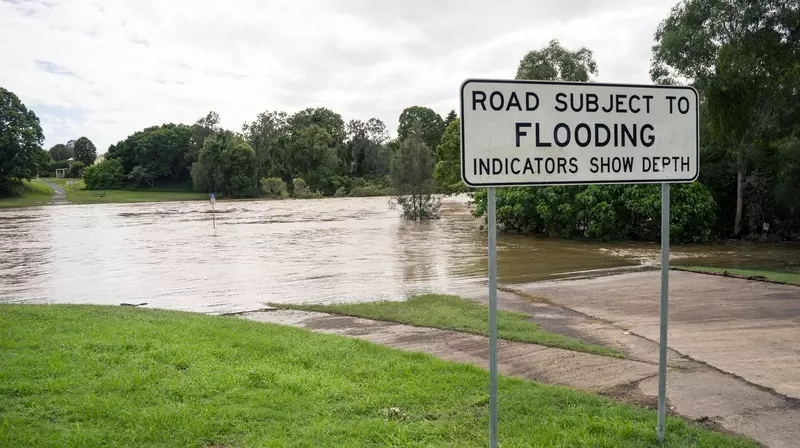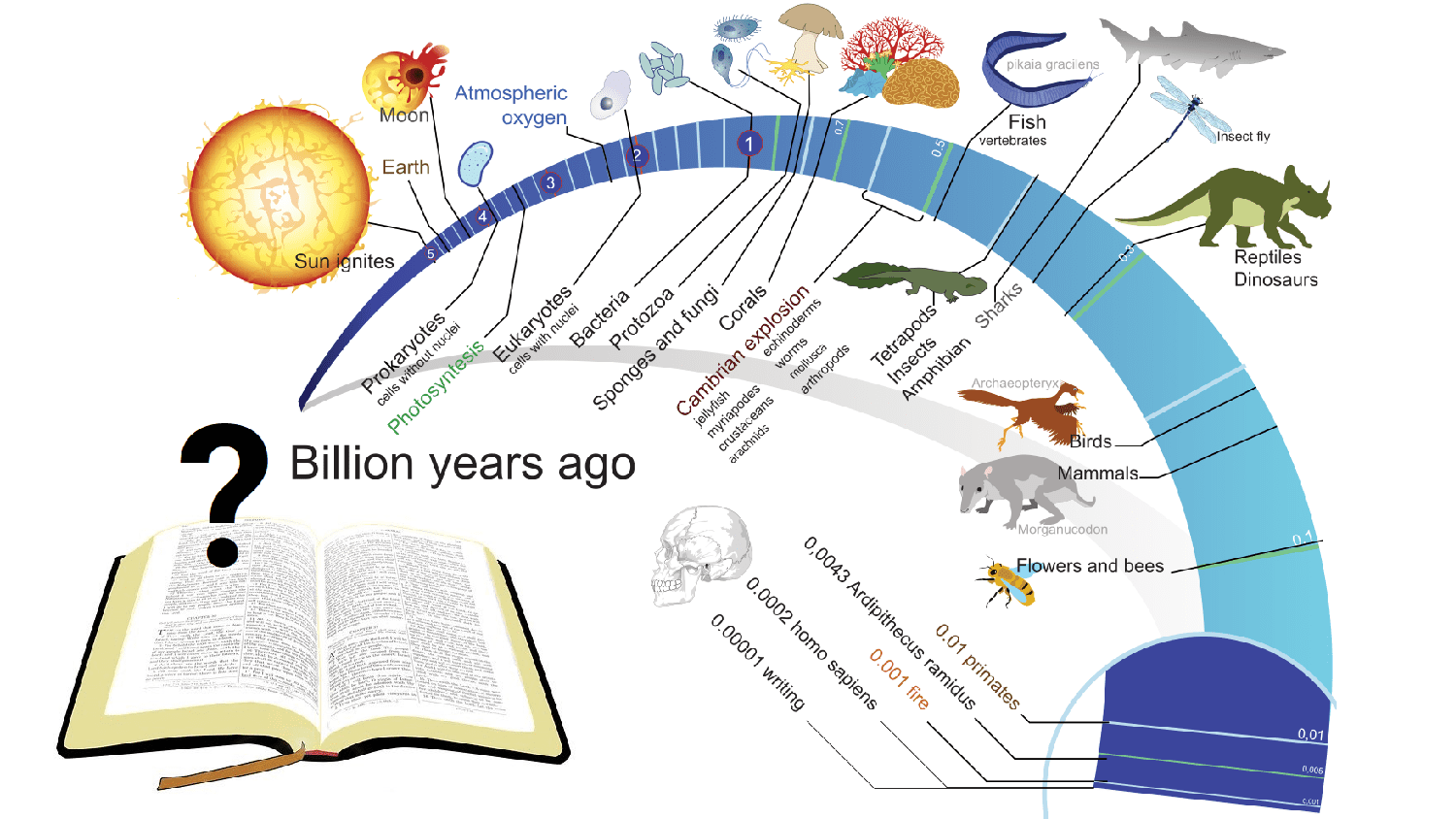[Originally published as part of: The Noachian Deluge: Does Scripture Say Global, or Local?]
Since our concern in this article is primarily with Scripture, let’s give some evidence that the Bible means to communicate this flood was global. We’ll deal with some of the intricacies and challenges below, but for now, let’s just state the case:
First, the language seems to be unequivocally teaching a global event
I think this can be seen most easily in Genesis 7:17-23:
And the waters prevailed, and were increased greatly upon the earth; and the ark went upon the face of the waters. And the waters prevailed exceedingly upon the earth; and all the high hills, that were under the whole heaven, were covered. Fifteen cubits upward did the waters prevail; and the mountains were covered. And all flesh died that moved upon the earth, both of fowl, and of cattle, and of beast, and of every creeping thing that creepeth upon the earth, and every man: All in whose nostrils was the breath of life, of all that was in the dry land, died. And every living substance was destroyed which was upon the face of the ground, both man, and cattle, and the creeping things, and the fowl of the heaven; and they were destroyed from the earth: and Noah only remained alive, and they that were with him in the ark. (Emphasis added)
A clear reading of these verses requires us to consider how unnatural it would be to read this account with a regional locale in mind. Although there are clear instances in Scripture where the words “every” and “all” are used to speak of localized events, we’re hard-pressed to claim this is one of them. This theme continues across the entire narrative.
The above narrative makes context use of the Hebrew term erets. On interpreting the meaning of this word, Smith writes the following:
The word אֶרֶץ (erets) occurs in the first verse of the Bible: “In the beginning God created the heavens and the earth [erets].” (Genesis 1:1).
God uses the term erets here in reference to the entire dry landmass of the planet:
And God called the dry land Earth [erets], and the gathering together of the waters He called Seas. (Genesis 1:10).In the first 11 chapters of Genesis, which cover the first two millennia (one-third of earth’s history), erets occurs 96 times. In 84 occurrences (87.5 percent) the context is global, implying any or every part of the entire landmass of the planet: “and let them be for lights in the firmament of the heavens to give light on the earth [erets]” (Genesis 1:15) or “. . . let them have dominion . . . over all the earth [erets] and over every creeping thing that creeps on the earth [erets]” (Genesis 1:26).
On 12 occasions (12.5 percent) the context is localized, clearly referring to a particular restricted portion of the landmass, and is usually translated as “land”:
Then Cain went out from the presence of the Lord and dwelt in the land [erets] of Nod on the east of Eden. (Genesis 4:16).
It is probably with reference to this second, localized context that some got the idea of erets meaning “a block of land.” But the primary, or default, meaning of erets in Genesis 1–11 is the entire landmass of the planet. […] making it an entirely suitable choice for Moses to use in describing a flood of global proportions.
Second, the rainbow covenant seems meaningless on a local interpretation
Due to the necessarily subjective nature of the local view (discussed more fully [in the original article]), it seems that we’re left wondering what the rainbow covenant meant. Traditionally, this has been thought to mean that it was a reminder of God’s promise never to destroy the world and its inhabitants again via the mechanism of water.
Of course, if the Flood was global, this has not happened—which renders God’s promise intact.
Conversely, on the local view, God does not speak to the geographic extent of the flood. This leaves the reader to wonder where one can draw the line. We may say that God has kept his promise because God does not break his promises, but this is circular reasoning. The simple fact is that many local floods of enormous disaster and destruction of life have been observed throughout the centuries.
If God’s promise is to mean anything significant, we should be able to clearly identify it. This is possible on the global view, but the local view faces many difficulties on this point.
Third, the original configuration of the Garden of Eden had four rivers flowing out of the one
No such place on earth exists, suggesting that this topography was altered during the flood.
In order to posit that a local flood could accomplish this, one would have to suppose that the extent was such that it would. While this is superficially plausible, it must be arbitrary since there is no geographical extent mentioned on the local view. This problem gets even worse since there are those who also argue for a local flood with an extent that would not accomplish this. This suggests, once again, circular reasoning.
One may observe this problem and posit a flood large enough to alleviate it, but the problem (along with the Garden!) disappears if the Flood is global, which Scripture does seem to indicate. We’ll revisit this below more fully as well.
Fourth, Jesus references the Flood, and compares it to a worldwide event
Consider Jesus’ teaching in Matthew 24:37-39:
But as the days of Noah were, so shall also the coming of the Son of man be. For as in the days that were before the flood they were eating and drinking, marrying and giving in marriage, until the day that Noe entered into the ark, And knew not until the flood came, and took them all away; so shall also the coming of the Son of man be.
Though not the point of his teaching, an important “incidental” to observe is that Jesus thought of this flood in the same manner as he thought of his return. If the coming of the Son of man is meant to be a worldwide event (which I don’t think any rational Christian would disagree with), then it seems we have good reason to think the global flood was also a worldwide event.
Fifth, Peter juxtaposes the flood against two other worldwide events:
The creation, and the coming judgment.
The Apostle Peter writes in 2 Peter 3:3-7:
Knowing this first, that there shall come in the last days scoffers, walking after their own lusts, And saying, Where is the promise of his coming? for since the fathers fell asleep, all things continue as they were from the beginning of the creation. For this they willingly are ignorant of, that by the word of God the heavens were of old, and the earth standing out of the water and in the water: Whereby the world that then was, being overflowed with water, perished: But the heavens and the earth, which are now, by the same word are kept in store, reserved unto fire against the day of judgment and perdition of ungodly men.
This places the flood right in between two events of undisputed global extent. Though I’m not necessarily willing to die on this hill, I think it is interesting that Peter uses the Greek word kosmos to reference “the world that then was.” Certainly, this word has a variety of meanings—one of which is simply all of mankind. However, that hardly appears to be the correct usage here since the creation of the world is not dealing with mankind, and even Peter’s reference to the judgment concerns not individual people, but “the heavens and the earth.”
Further, I think one can make the case that the vast majority of New Testament usage for the word kosmos concerns the entire world, and there are other words (used in this very passage!) that would seem to more accurately teach a localized extent.
Although we must value the exegetical enterprise in an attempt to better understand what the biblical authors intend, I want to stress the importance of taking the plain meaning of Scripture at face value. By using spurious hermeneutics, one could make the Bible say whatever they wanted! Indeed, many do. But in this case, the clear communication from Scripture seems to support the global view.
To be continued…







